The garden of the Yorkshire Manor house which inspired Jane Eyre’s Thornfield Hall, lovingly restored
At Norton Conyers, Ripon, North Yorkshire (believed to be the inspiration for Charlotte Brontë's most famous location) passion of a different kind has brought the garden back to life, finds Non Morris. Photographs by Val Corbett.
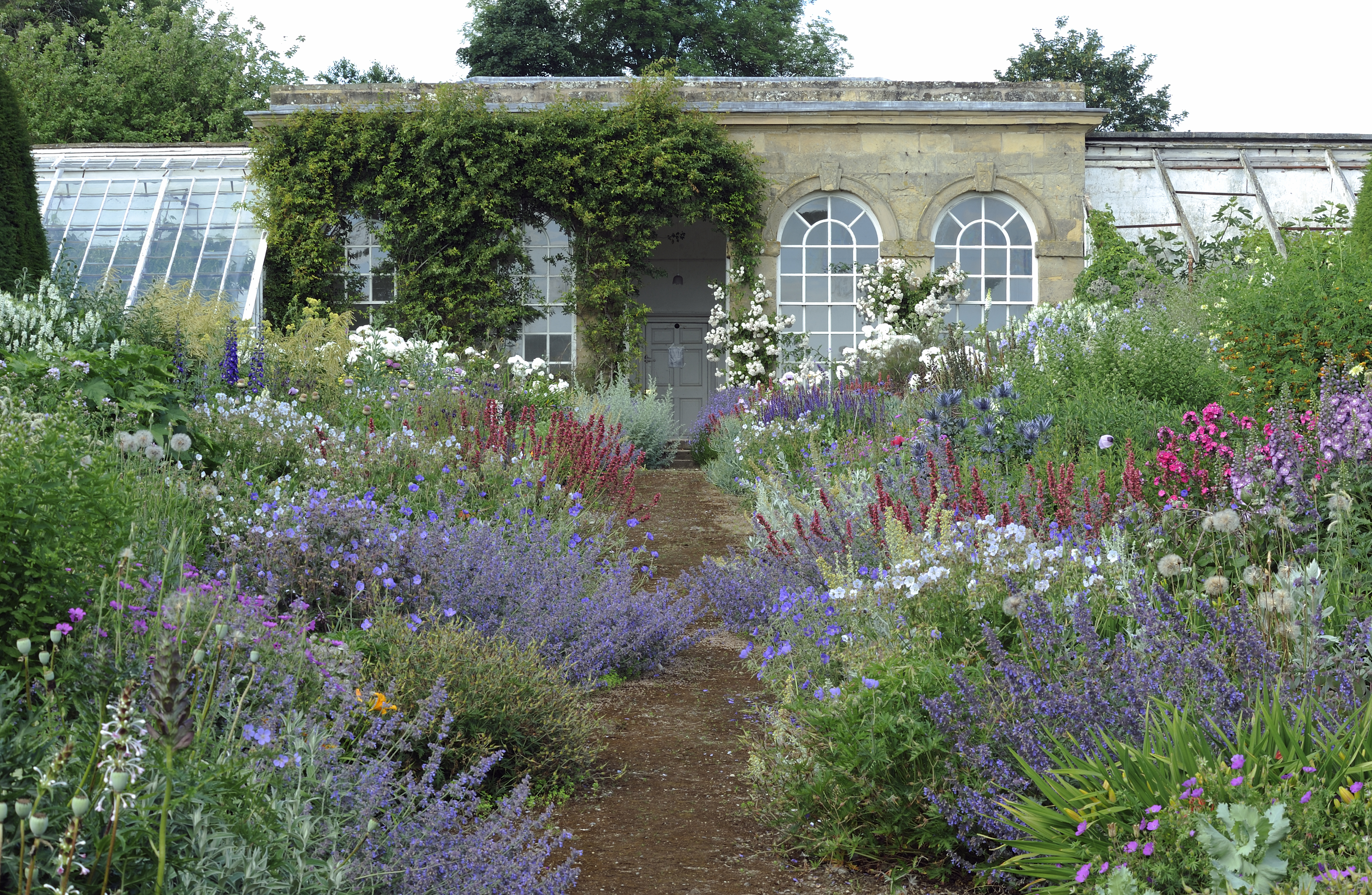

Norton Norton Conyers is an utterly charming Dutch-gabled manor house – medieval with Stuart and Georgian additions – near Ripon in North Yorkshire. Elegant parkland stretches out before it, with spreading walnut, oak and lime trees planted in a fan shape in the 18th-century manner. ‘It was very carefully done,’ explains Halina Graham, ‘to form the vistas.’

Five minutes’ walk away, on a south-facing slope and abutting the stables (‘for obvious reasons,’ notes Sir James Graham), is the 2½-acre walled garden I’ve come to see.
‘Three storeys high, of proportions not vast, though considerable; a gentleman’s manor house, not a nobleman’s seat.’
Strolling towards the garden on a gentle July day, the tumultuous history of the house seems hard to imagine. Since the Graham family’s arrival at Norton Conyers in 1624, there has been a brave (although probably legendary) loyal death at Marston Moor, visits from kings – Charles I and James II – and an accidental murder (the 4th Baronet instead of the tiresome housekeeper, who was, in fact, his mistress). There were entire periods where the family ‘did nothing but hunt, eat, spend money and have mistresses’ and even a fortunate, estate-saving marriage to ‘a double heiress’.
For the past 30 years or so, since Sir James took it over in a near-dilapidated state, there has been an incredible and passionate battle to restore and preserve the house. It’s the couple’s tenacity, generosity and unflagging sense of duty in their role as guardians of such a special place that pervades every aspect of Norton Conyers today.
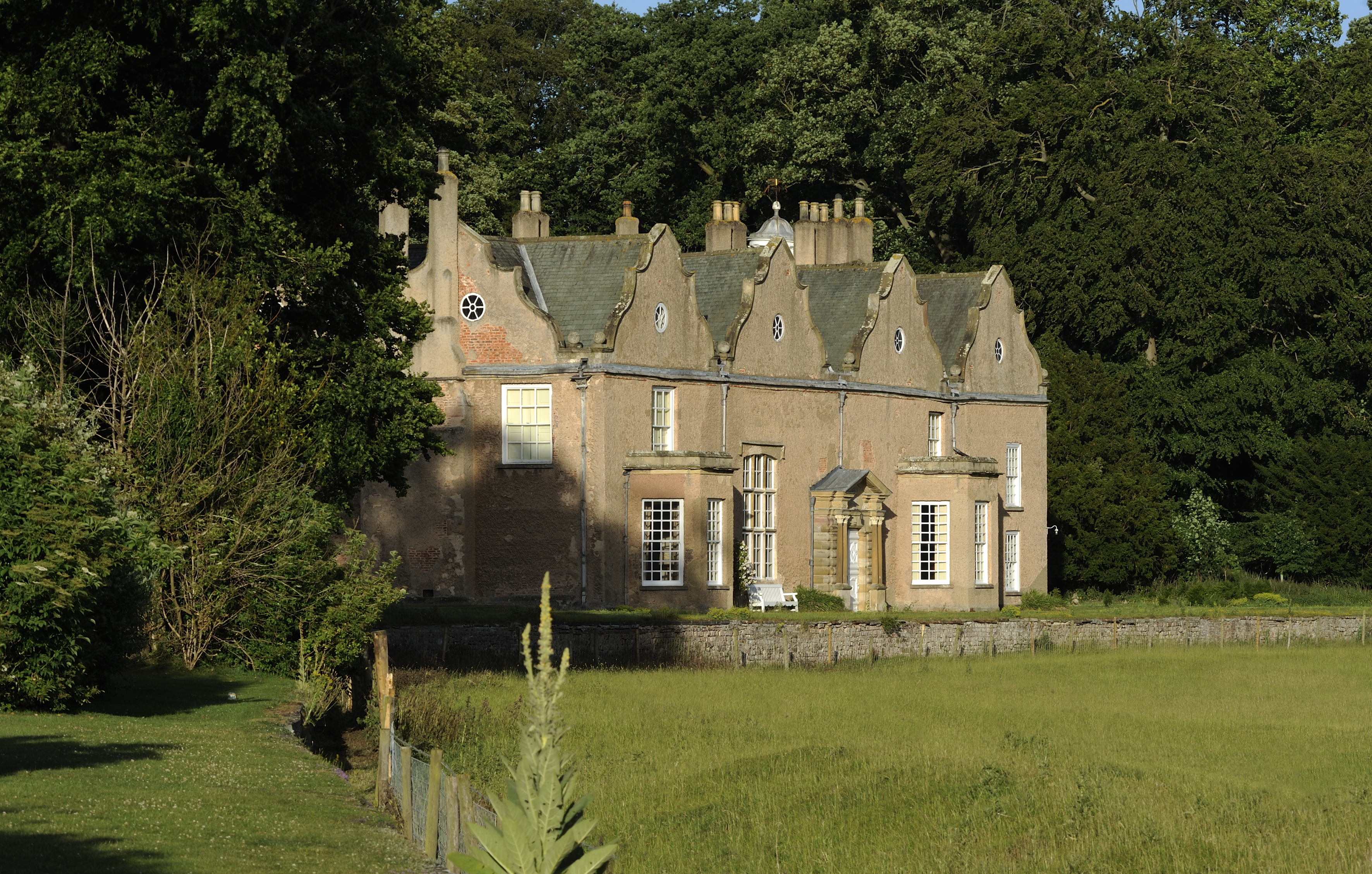
Just before we arrive at the garden, Sir James and Lady Graham look back at the house and repeat in cheerful unison the lines from Jane Eyre that suggest (together with a recently discovered attic staircase) that Norton Conyers was the inspiration for Mr Rochester’s Thornfield Hall: ‘Three storeys high, of proportions not vast, though considerable; a gentleman’s manor house, not a nobleman’s seat.’
Moments later, we are marching on, Lady Graham agreeing that the billowing yellow Mount Etna broom at the garden gate provides a wonderfully warm welcome and Sir James explaining how the former greenhouses were heated with ‘a very considerable expenditure on coal and labour’. There are tiers of stoke holes that supplied a network of flues on the exterior of the wall and, on its inner face, traces remain of the glasshouses themselves.
‘What we’ve done is retain the bones of the original plan, including the main paths, but broken it up a bit to soften it.’
‘The garden was laid out according to the best practices of the 18th century,’ Lady Graham explains. ‘What we’ve done is retain the bones of the original plan, including the main paths, but broken it up a bit to soften it.’ As you arrive, a gentle path stretches before you, with a newly replanted green-and-gold border on the left. Plants here include the California tree poppy, Romneya coulteri, in excellent combination with the handsome rounded shrub Bupleurum fruticosum, which was smothered with yellow-green parasol-like flowers when I visited.
Exquisite houses, the beauty of Nature, and how to get the most from your life, straight to your inbox.
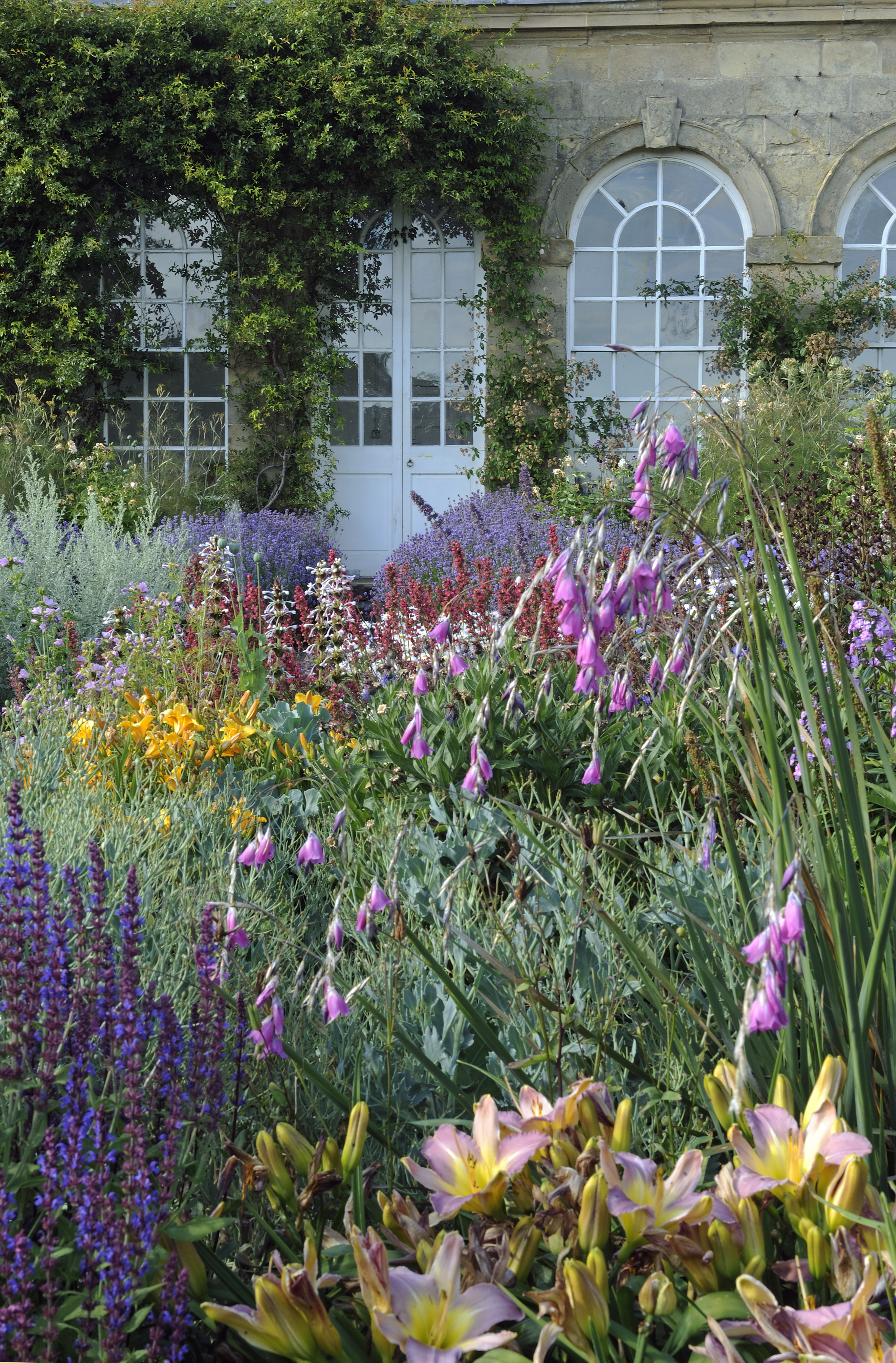
Further on is the cut-flower border, full of sweet peas and ranks of up-and-coming dahlias. To the left, an almost glowing clipped hedge of Lonicera nitida Baggesen’s Gold is lined with Lavandula x intermedia Grosso, the wonderful long-stemmed lavender whose aromatic deep-blue flowers are about to explode and fill the path with scent, and, beyond these, is a stretch of medlar and quince trees.
Lady Graham introduces me to head gardener and expert plantsman Giles Gilbey: ‘We’re so incredibly lucky to have a gardener of his calibre.’ Mr Gilbey has worked at Norton Conyers for 25 years. Amazingly, he managed originally on only one day a week – ‘I can’t tell you how ashamed I am to think that Giles did all the yew clipping himself’ – but he now does two days with help from a small team of trainees and volunteers. ‘Now, we’re motoring a bit more, the garden is getting better each year,’ he tells me.
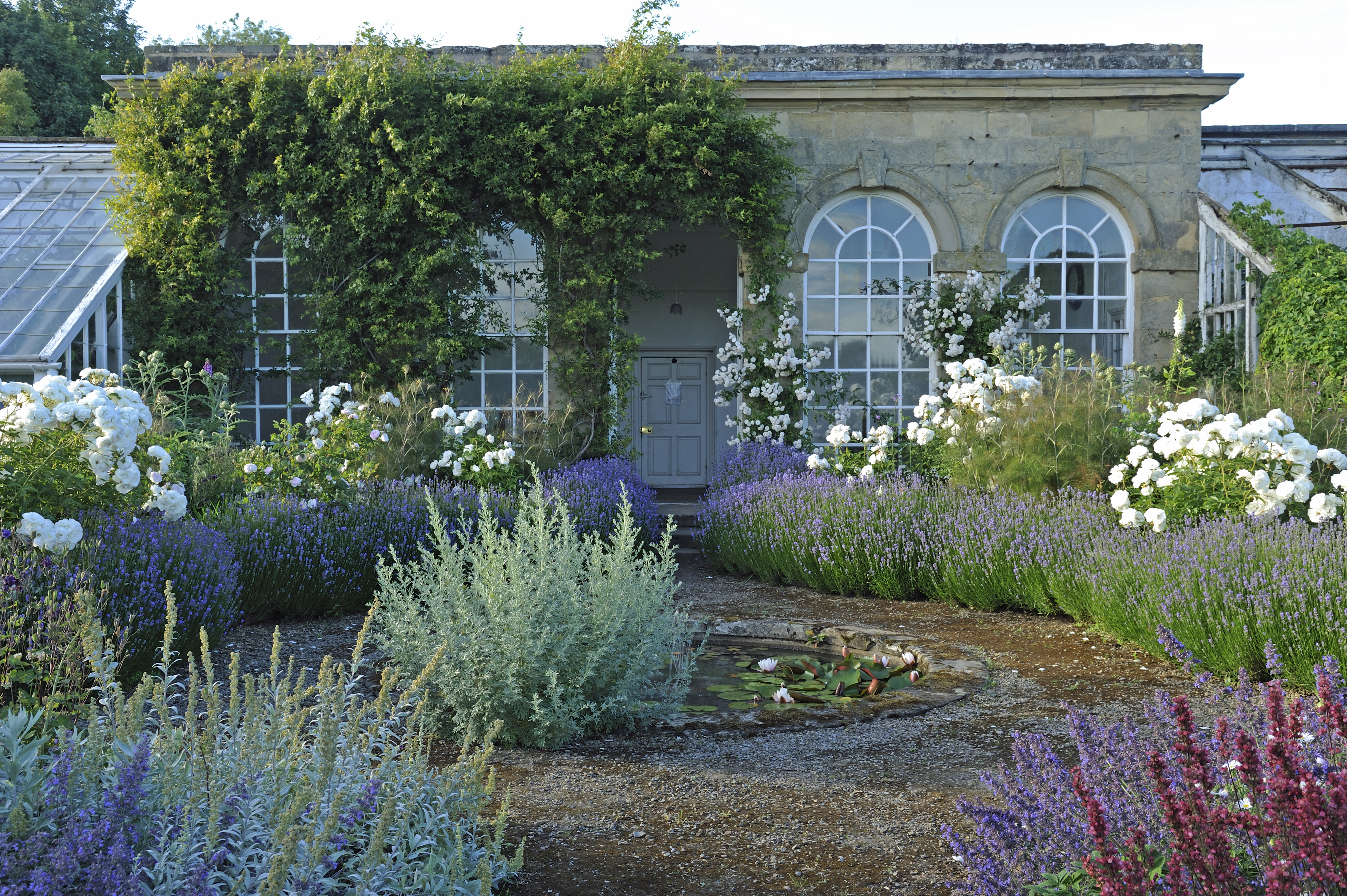
His calm expertise and deep, but quietly displayed passion for plants is evident from the moment we meet. Of the medlar tree alone, he’s keen to communicate his enthusiasm: ‘It’s very pretty in flower, lovely in autumn. Just a very pleasing shape. A good, good tree.’
'There are particularly plump redcurrants, their name lost in the mists of time, used for making a very original and unusual Bakewell tart'
Developing new areas for vegetable production has been part of this latest phase. Shandy, Mr Gilbey’s Patterdale terrier, has been a key player: ‘She got the garden rabbit-free for us.’ However, every inch of wall has long been host to trained fruit trees. There are Morello cherries on the north-facing wall, sweet cherries and pears on the walls facing west and glowing orange apricots against the fading white paint on brick where the glasshouses used to be.
There are particularly plump redcurrants, their name ‘lost in the mists of time’, used for making ‘a very original and unusual Bakewell tart’ that’s served to visiting groups and the most fragrant and delicious raspberries I’ve ever eaten.
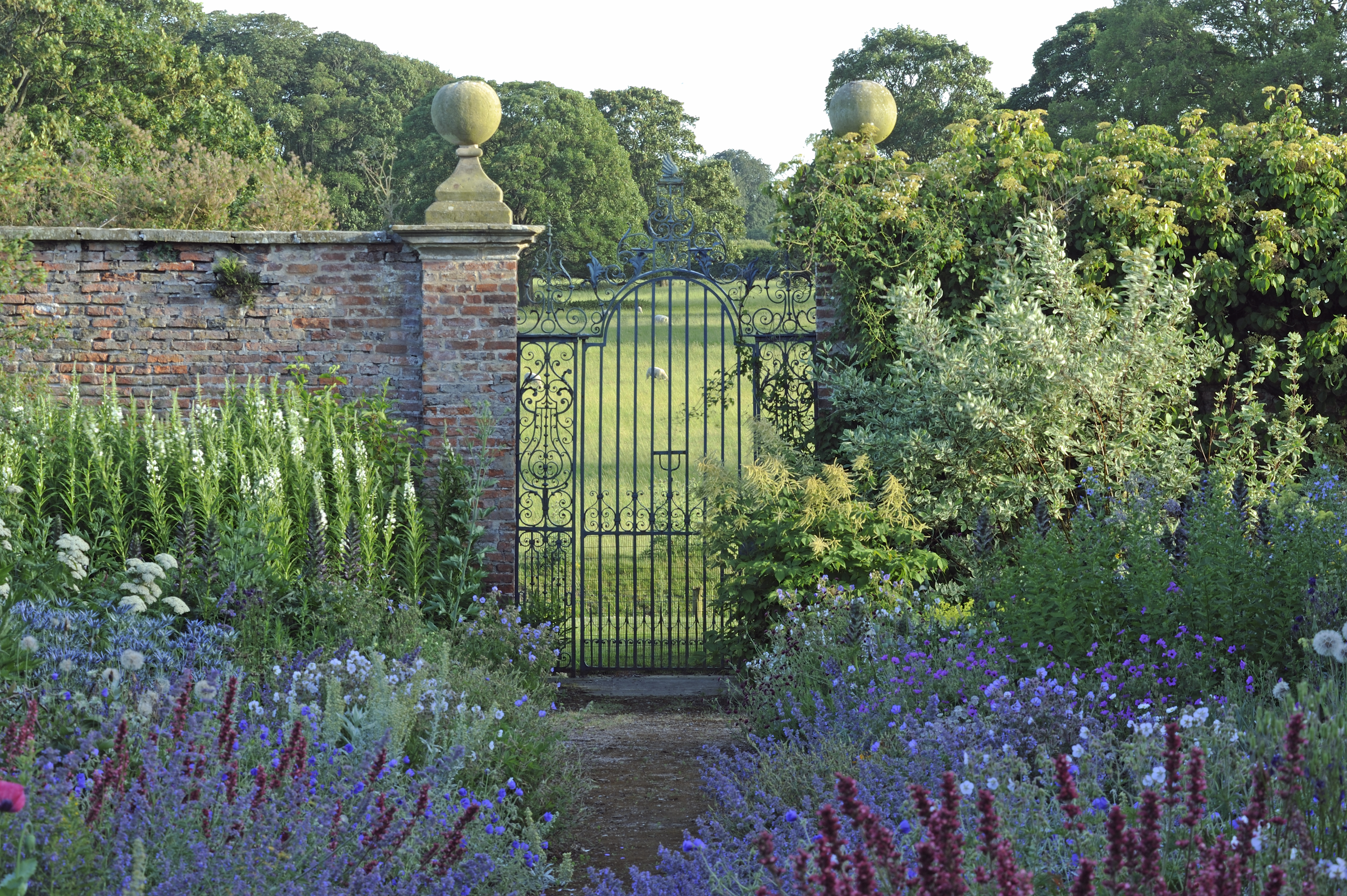
Indeed, everything in the walled garden seems to be grown with the same gentle, yet celebratory gusto. There is a wonderful double-iris border with 11 varieties of subtly scented bearded iris in pastel shades that looks extraordinary for two weeks in June, an aromatic herb bed full of nostalgic plants such as Baldmoney and Lad’s Love, a mint bed in which the six varieties of mint are cleverly separated by slates and a jewel-like collection of salvias (one of Mr Gilbey’s specialities) in handsome stone troughs.
There is an almost hidden Spring Garden and a Circular Garden, with comfortable benches surrounded by medlars, the creamy and fragrant rose Jude the Obscure and the dusky-purple elder Guincho Purple.
At the centre of the walled garden, there’s a spreading apple tree dramatically draped in the climbing white Bobbie James. ‘Not a rose for the faint-hearted,’ smiles Mr Gilbey. Instead of trying to tame it, he’s created a shelter beneath it using a windblown oak from the estate to make a simple, elegant bench.
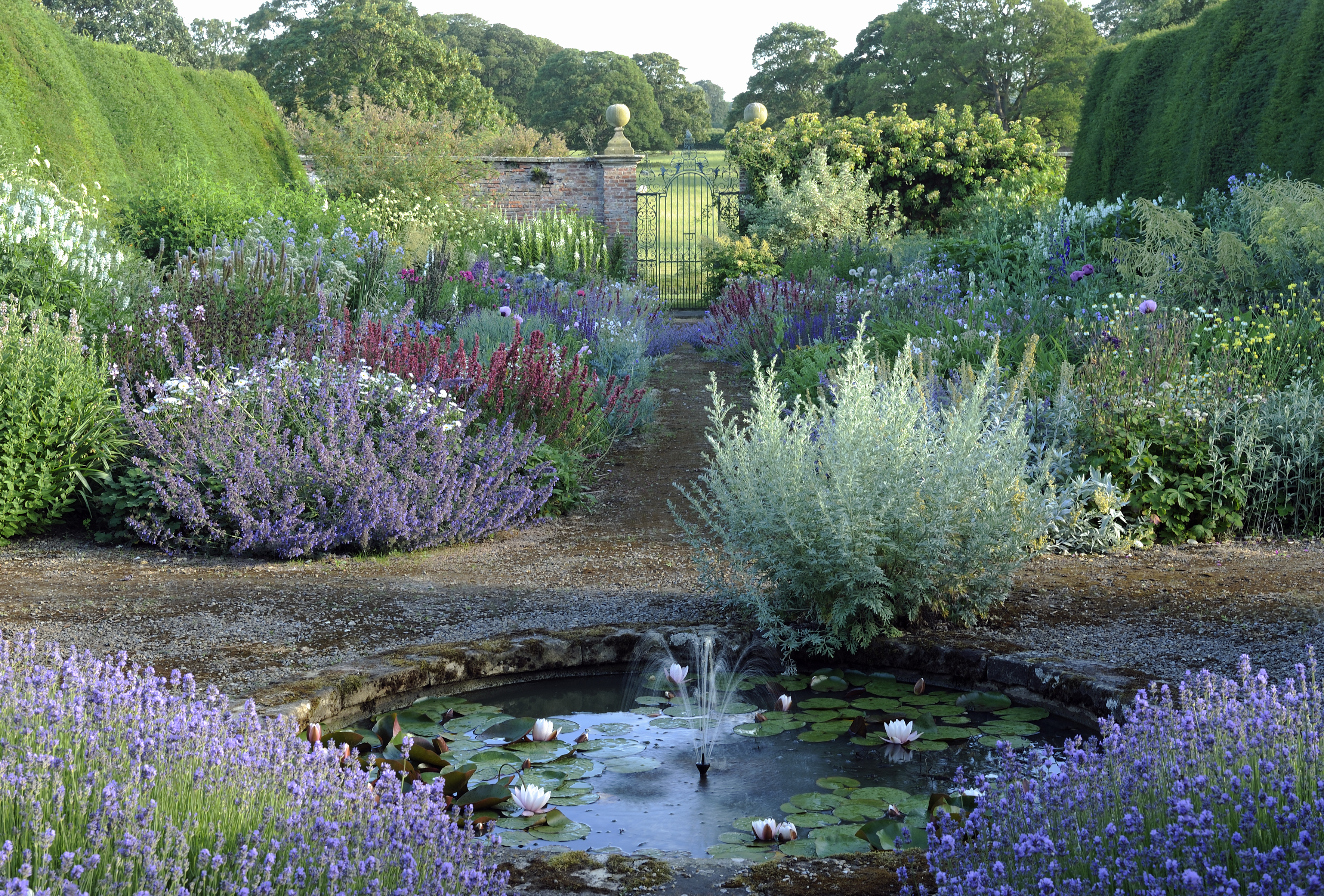
In the 18th century, carriages would set down visitors at the enormous double gates, from which they would have headed straight for the Orangery to be presented with a deli-berately fine vista. ‘As it was built for recreation, we believe the technical name is actually “pleasure pavilion”,’ says Lady Graham.
To this day, it’s a delight to enter the Orangery, with its cool flagstone floor, and to look out through the arched doorway, framed with Rosa Félicité Perpétue, towards the lily pond, the lavender and the hazy tapestry of a double herbaceous border which leads down to the fine Queen Anne iron gate and out to the parkland beyond.
Lady Graham is spot on when she says: ‘I think Giles has got the eye of an artist. His colours are very subtle.’ These are borders to learn from. Artemisia ludoviciana Valerie Finnis, grown usually for its almost white-silver foliage, is here also celebrated for its dull yellow flowerheads and Heuchera Raspberry Regal, with rhythmic, knee-high flowerheads of a rich dark pink, offers a wonderful low framework and foil to other plants.
'The Grahams hope the garden is "very English at its best and yet not boring". How right they are.'
There is the unusual Morina longifolia, which has fearsome-looking foliage, but elegant pink-and-white tubular flowers, and delicate seedlings of Geranium pratense in pastel shades that nod and dance their way through the bruised mauve delphinums and the airy, pale-yellow Cephalaria gigantea.
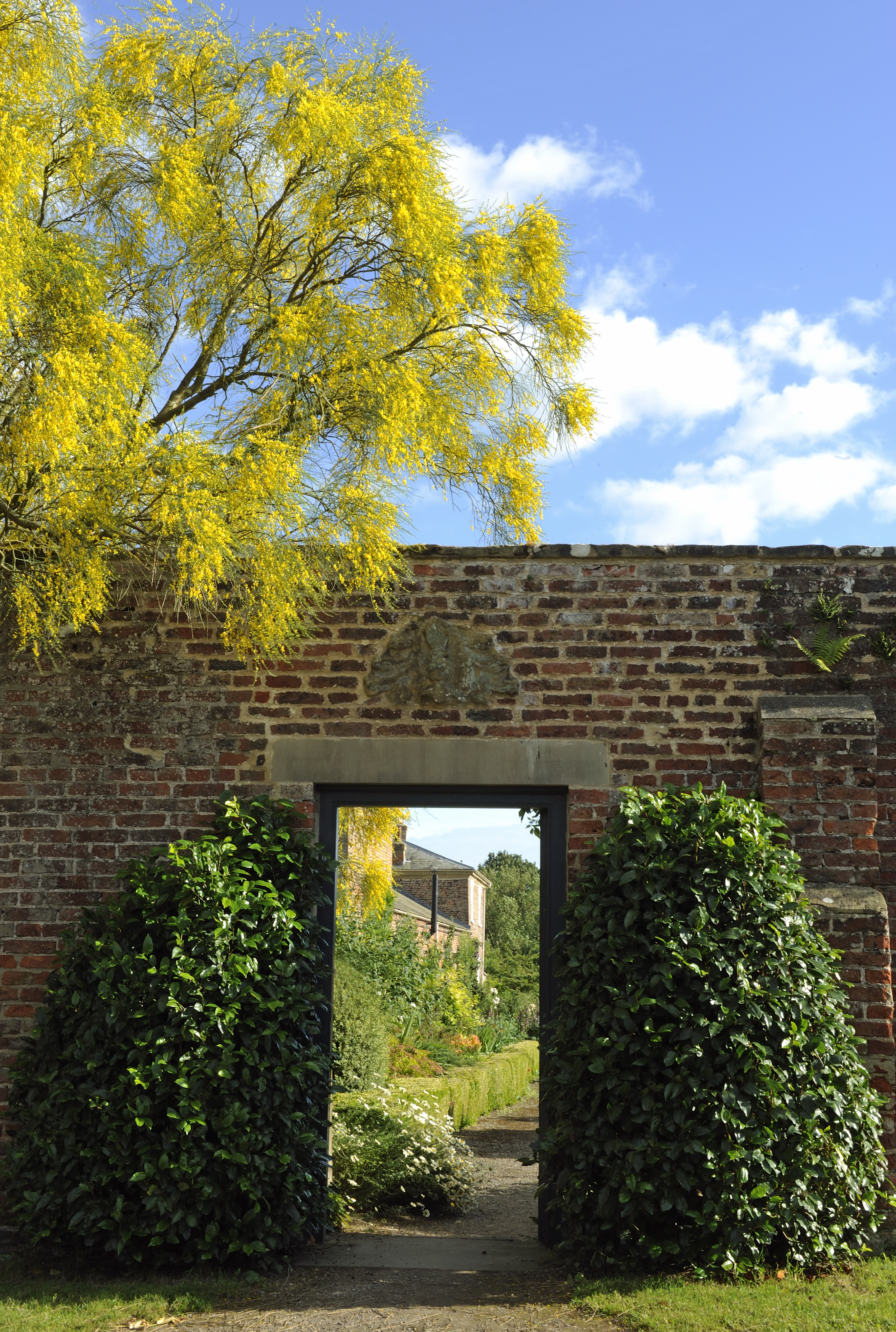
On one side of the Orangery is a productive peach house and, on the other, a delectable secluded terrace has been created from the cast-iron framework of the former Vine House. Here, you can sit in the sun on a curly white bench among glossy fig leaves, swags of the purple-blue Solanum crispum Glasnevin and headily scented pineapple broom.
At the top of the garden, there is a huge patch of bright-orange Chinese lanterns (Physalis alkekengi), much loved by Lady Graham for cheerful winter arrangements. ‘They’re rather fun really, but they need to be hemmed in,’ says Mr Gilbey. This patch alone makes my heart sing and tells you everything you need to know about the personal and uplifting approach to this historic garden. The Grahams hope the garden is ‘very English at its best and yet not boring’. How right they are.
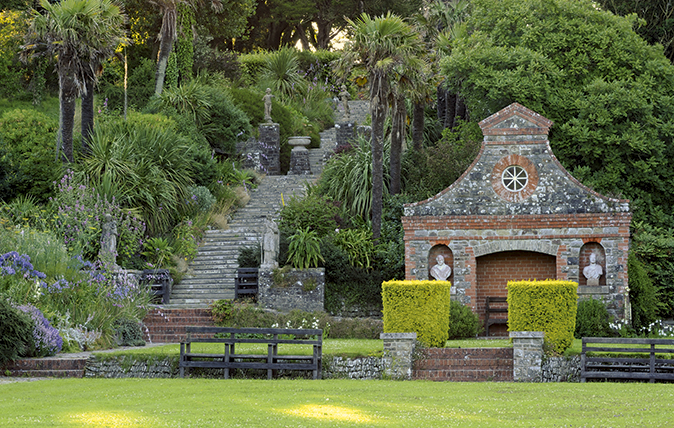
Tapeley Park: A Devonshire garden filled with dramatic flourishes at every turn
Non Morris discovers that experimentation, environmentalism and numerous dramatic flourishes invigorate this unusual Devonshire garden at every turn.

The walled garden at Glenarm Castle, full of surprising, exhilarating and fiery colours
Glenarm Castle's walled garden is a testament to the endless nurturing enthusiasm and creativity of those who care for it,

Warnell Hall, Cumbria: Where sympathy and experimentation go hand in hand
Non Morris is intrigued by the close attention to detail that has produced a new Cumbrian garden of great style
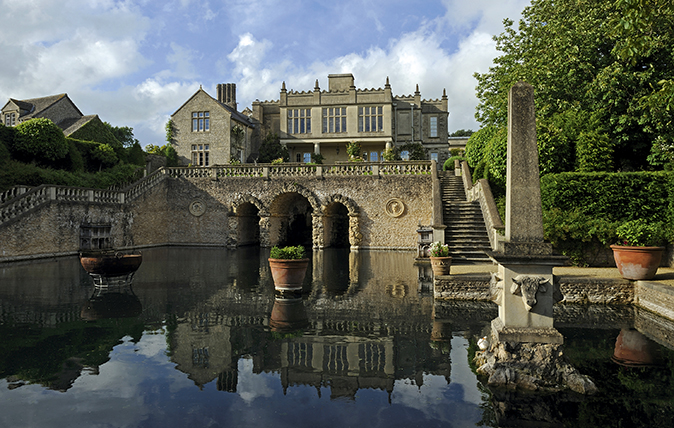
Credit: ©Val Corbett/Country Life Picture Library
Euridge Manor Farm, Wiltshire: A fairytale sense of fun, with a pool where rose petals gather
Non Morris is enchanted by the garden buildings, attention to detail and abundant planting in a recently made Wiltshire garden.
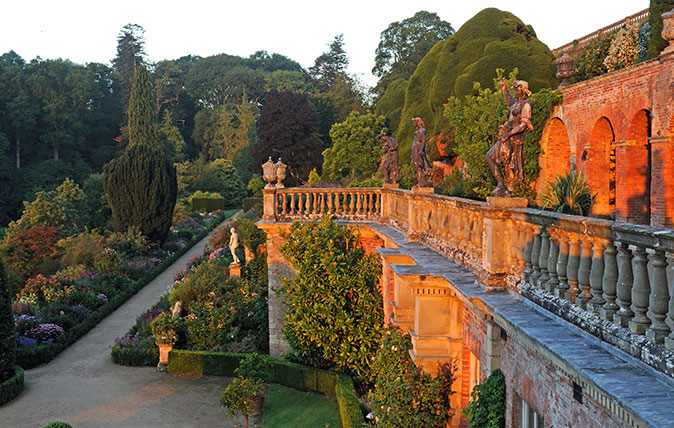
Powis Castle: An exemplary, inspirational and uplifting garden full fit for the 21st century
Non Morris visits Powis Castle in Welshpool, a plantsman’s paradise that reveals more and more as you traverse its many

Stanton Fence: A traditional English garden transformed by the touch of a Chelsea gold-medallist
Non Morris is blown away by Stanton Fence near Morpeth, a romantic garden set in a steeply wooded river valley
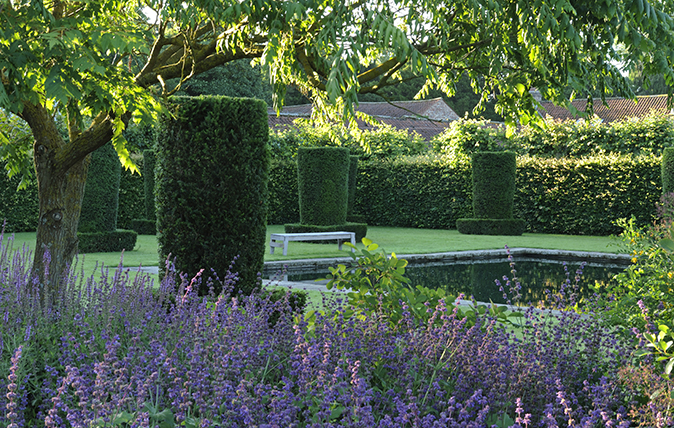
Scampston Hall: The early work of a master garden designer, still shining bright after two decades
Piet Oudolf was still up and coming when he was commissioned to create a garden at Scampston Hall in North

Lowther Castle: The spectacular and historic gardens that rise from one of Britain's most evocative ruins
The gardens at Lowther Castle, Penrith, Cumbria, rise artfully from the ruins of their spectacular setting — yet the effort

Reddish House: The 'dream house' and gardens of Cecil Beaton, restored for the 21st century just as he'd have wished
Reddish House in Wiltshire is the place where the great Cecil Beaton fell in love with gardening. Taking on this
